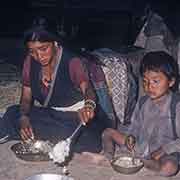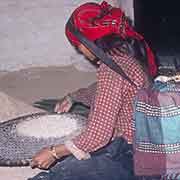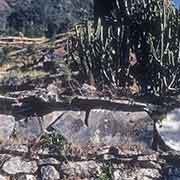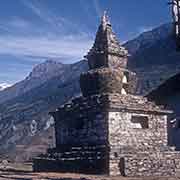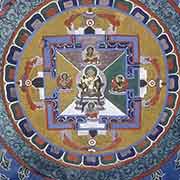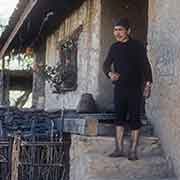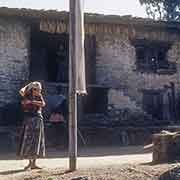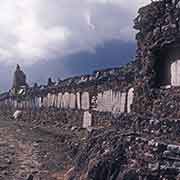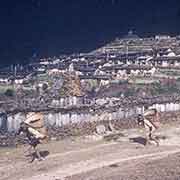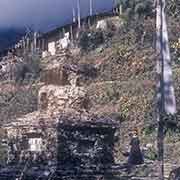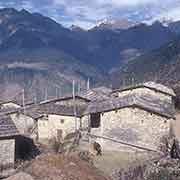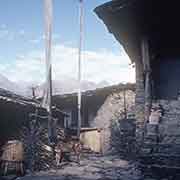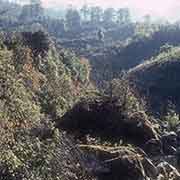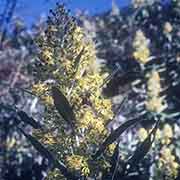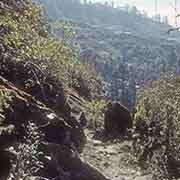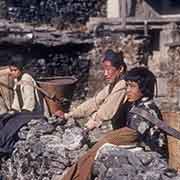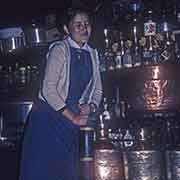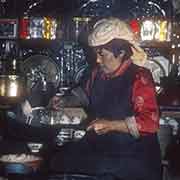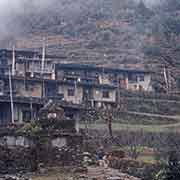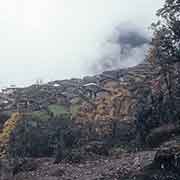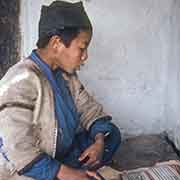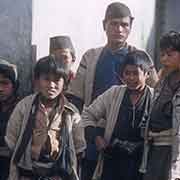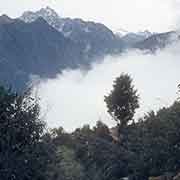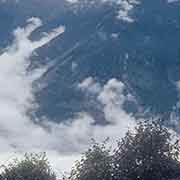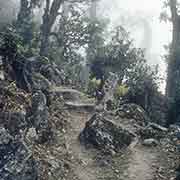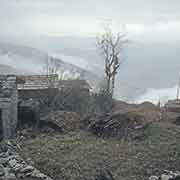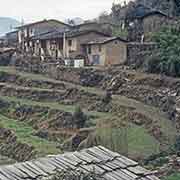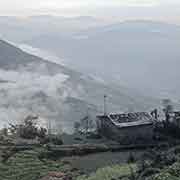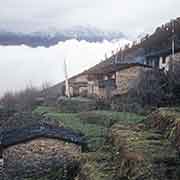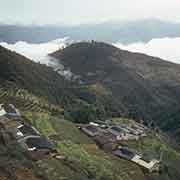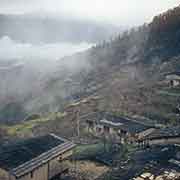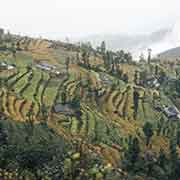Photos of Sherpa villages in northern Nepal
Sherpa villages in northern Nepal
The Sherpas, a Himalayan people, are Buddhists and speak a Tibeto-Burman language mixed with eastern and central Tibetan dialects. They have won fame as guides and porters for mountain-climbing expeditions, accustomed to living at high altitudes. Sherpa mountaineer Tenzing Norgay guided the New Zealand mountaineer and explorer Edmund Hillary to the summit of Mount Everest on 29 May 1953; the first climbers confirmed to have accomplished this.
you may then send it as a postcard if you wish.
The Helambu trek leads north, past small Sherpa villages like Timbu and Kakani, passing Chortens, Lamaist shrines, and important religious monuments in Tibetan Buddhism, symbolising Buddha’s presence. A Mani stone wall, with stone plates carved with the six-syllabled mantra of Avalokiteshvara (Om mani padme hum), as a form of prayer in Tibetan Buddhism, stands at the entrance to Tarke Ghyang, one of the largest Sherpa villages.
From Tarke Ghyang, another path leads via Chimigyang to Sermathang, the southernmost Sherpa village; compared to Tarke Ghyang, the houses are widely spaced. From here, the view is to Langtang, another trekking destination. The trail then leads down to Melamchi and further south, linking it with the highway to Kathmandu.



